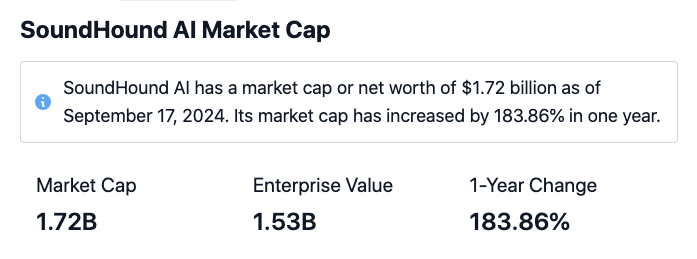20 Handy Ways For Choosing AI Stock Trading Sites
20 Handy Ways For Choosing AI Stock Trading Sites
Blog Article
Top 10 Tips For Assessing Ai And Machine Learning Models Used By Ai Stock Predicting/Analyzing Trading Platforms
The AI and machine (ML) model utilized by the stock trading platforms and prediction platforms need to be evaluated to ensure that the data they provide are precise trustworthy, useful, and useful. Overhyped or poorly designed models could result in inaccurate predictions and even financial loss. Here are 10 of the best tips to help you evaluate the AI/ML models of these platforms.
1. Learn the purpose and approach of this model
Determining the objective is important. Determine whether the model has been designed to allow for long-term investments or trading in the short-term.
Algorithm transparency - Examine to determine if there are any public disclosures regarding the algorithm (e.g. decision trees, neural nets, reinforcement, etc.).
Customizability: Determine whether the model can be adapted to your specific trading strategy or risk tolerance.
2. Assess the model's performance using through metrics
Accuracy Verify the model's predictive accuracy. Don't rely only on this measure but it could be misleading.
Accuracy and recall: Check whether the model is able to detect real positives, e.g. correctly predicted price fluctuations.
Risk-adjusted Returns: Check the model's predictions if they yield profitable trades when risk is taken into account (e.g. Sharpe or Sortino ratio).
3. Check the model with backtesting
Performance from the past: Retest the model using historical data to assess how it would have been performing in previous market conditions.
Tests on data not intended for training To avoid overfitting, test the model with data that was never previously used.
Analyzing scenarios: Evaluate the model's performance under different market conditions (e.g. bull markets, bear markets high volatility).
4. Make sure you check for overfitting
Overfitting signs: Look for models that perform extremely well with training data, but poorly on unseen data.
Regularization techniques: Find out whether the platform uses techniques like L1/L2 normalization or dropout to prevent overfitting.
Cross-validation: Ensure the platform is using cross-validation to assess the model's generalizability.
5. Assess Feature Engineering
Relevant features: Check whether the model is using relevant features (e.g., price, volume and sentiment data, technical indicators macroeconomic factors, etc.).
The selection of features should ensure that the platform is choosing features that have statistical value and avoid redundant or unneeded information.
Updates of dynamic features: Check if your model is updated to reflect new characteristics and current market conditions.
6. Evaluate Model Explainability
Interpretability (clarity) It is important to verify that the model is able to explain its assumptions clearly (e.g. the value of SHAP or feature importance).
Black-box platforms: Beware of platforms that use too complicated models (e.g. neural networks deep) without explainability tools.
User-friendly insights: Find out if the platform gives actionable insight in a format that traders can comprehend and apply.
7. Reviewing the Model Adaptability
Changes in the market. Examine whether the model is able to adapt to the changing conditions of the market (e.g. an upcoming regulation, an economic shift or a black swan event).
Continuous learning: Find out if the platform continuously updates the model to include new information. This can improve performance.
Feedback loops. Make sure that the model incorporates the feedback from users and actual scenarios to enhance.
8. Examine for Bias during the election.
Data biases: Check that the training data are representative and free from biases.
Model bias: Check whether the platform monitors and mitigates biases in the model's predictions.
Fairness - Check that the model isn't biased in favor of or against particular stocks or sectors.
9. The computational efficiency of the Program
Speed: Determine whether your model is able to make predictions in real time or with minimum delay particularly for high-frequency trading.
Scalability - Make sure that the platform is able to handle huge datasets, many users and still maintain performance.
Utilization of resources: Check if the model is optimized to make use of computational resources efficiently (e.g. GPU/TPU).
Review Transparency and Accountability
Model documentation: Make sure that the platform offers comprehensive documentation on the model's structure, its training process and its limitations.
Third-party audits : Verify if your model has been audited and validated independently by third-party auditors.
Error handling: Determine that the platform has mechanisms to detect and fix model errors or failures.
Bonus Tips
Reviews of users and Case Studies: Review user feedback, and case studies to evaluate the actual performance.
Trial period for free: Test the model's accuracy and predictability by using a demo or a free trial.
Support for customers: Make sure whether the platform offers solid customer support that can help solve any product or technical issues.
These tips will help you assess the AI models and ML models that are available on platforms that predict stocks. You will be able to determine if they are transparent and trustworthy. They must also align with your trading objectives. Have a look at the top rated ai day trading for site advice including trading ai bot, ai stock picker, ai stock prediction, best copyright prediction site, best ai stocks, free ai investing app, ai bot for copyright trading, best ai trading app, ai trade, ai stock and more.
Top 10 Ways To Evaluate The Regulatory Compliance Of Ai Stock Forecasting/Analyzing Trading Platforms
Regulatory compliance plays a crucial role in evaluating AI platforms for analysis and prediction of stocks. Compliance ensures that a platform adheres to financial regulations, and operates within legal frameworks while protecting user data. This reduces the risk of legal or financial problems. These are the top 10 guidelines for assessing the regulatory compliance of these platforms:
1. Verify the validity of your license and registration.
Regulatory bodies : Verify that the platform is licensed and registered by the appropriate financial regulatory authority (e.g. SEC, FCA, ASIC, etc.) in your nation.
Broker partnerships: If the platform integrates with brokers, ensure that the brokers are licensed and properly regulated.
Public records: Check the official website of the regulator for the platform's registration status and any past violations.
2. Compliance with Data Privacy Evaluation
GDPR If you're operating or providing services to users in the EU, make sure that your platform is in compliance with the General Data Protection Regulation.
CCPA: California Consumer Privacy Act compliance is mandatory for all users.
Policies for handling data. Review the platform’s privacy policies and ensure that it clearly describes the manner in which user data is collected, shared, and stored.
3. Assess Anti-Money-Laundering (AML) measures
AML policies: Ensure the platform has robust AML policies to prevent and detect cash laundering.
KYC procedures - Ensure that the platform complies with Know Your Customer procedures for verifying user identities.
Monitoring transactions: Ensure that the platform tracks transactions to detect suspicious behavior and notify authorities.
4. Make sure you are in compliance with Trading Regulations
Market manipulation: Ensure that your platform has strategies to stop market manipulation, such as wash trading or the spoofing.
Order types: Ensure that the platform adheres to rules regarding order types.
The best execution: Ensure that the platform employs top execution techniques to execute trades at a competitive price.
5. Cybersecurity Assessment
Data encryption. Ensure your platform uses encryption of user data both in the rest.
Response to incidents. Verify that there is a clearly defined incident response plan on the platform to address cyber attacks and data breaches.
Certifications: Find out if a platform has been accredited for cybersecurity (e.g. ISO 27001, SOC 2)
6. Transparency Evaluation and Disclosure
Fee disclosure: Verify that the platform discloses clearly all fees including additional charges or hidden charges.
Risk disclosure: Ensure that the platform discloses all risks, particularly in the case of high-risk strategies, or trading using leverage.
Performance reporting: Check whether the platform offers transparent and accurate performance reports for its AI models.
7. Verify that you are in compliance with International Regulations
Cross-border Trading: If you're trading is international it is important to make sure that the platform you use meets all requirements for regulatory compliance in every jurisdiction.
Tax reporting: Find out whether the platform provides tools or reports to help users to comply with tax regulations.
Check for compliance with sanctions. Verify that the platform is in compliance with sanctions to the sanctions and will not allow trading or dealings with banned entities or countries.
8. Examine the records-keeping and audit trail
Transaction records: The platform should keep detailed records of all transactions to be used for regulatory and auditor purposes.
User activity records: Verify whether the platform tracks user activity including logins or trades, as well as any changes in settings for your account.
Audit-readiness: Find out if the platform will be able to produce all required documentation and logs needed for the possibility of a regulatory audit.
9. Verify compliance with AI Specific Regulations
Algorithmic Trading Rules: If your platform supports algorithmic trading, ensure it complies with regulations such as MiFID II (in Europe) or Reg SCI (in the U.S.).
Fairness and bias: Check whether the platform modifies or monitors its AI models for fair and ethical trading.
Explainability. Certain regulations could need the platform to explain AI-driven prediction and decisions.
10. Review User Commentaries as well as Regulatory Historical History
User reviews: Read the opinions of other users and then compare it with the platform's compliance with the regulations.
Regulatory history: Verify if any regulatory violations have been committed, as well as fines and penalties.
Third-party inspections: Check if the platform is subjected to regular third-party inspections in order to ensure compliance.
Bonus Tips:
Legal consultation: Discuss with a legal expert about the platform's conformity to relevant regulations.
Trial period: Try the platform for free or use the demo to check the compliance features and the documentation.
Customer Support: Ensure that the platform offers customer support for any questions or issues related to compliance.
If you follow these guidelines, you can effectively assess the compliance with regulations of AI stock predicting/analyzing trading platforms, ensuring you choose one that adheres to legal guidelines and protects your rights. Compliance not only lowers the risk of legal liability, but also increases trust in a platform's service. Follow the top rated inquiry for blog tips including ai investing app, best ai stock, best stock analysis app, chart analysis ai, best ai copyright to buy, ai investment stock, ai trading tools, ai stock prediction, ai stock trading, best ai copyright trading bot and more.